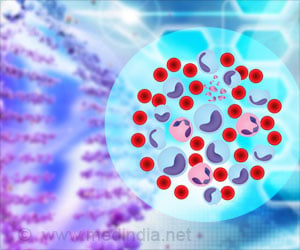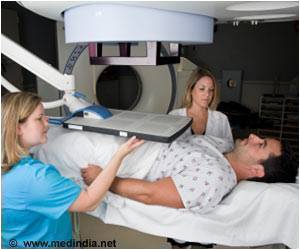Flat epithelial atypia (FEA) is one type of high-risk breast lesion that calls for close observation, rather than surgical removal of these lesions.

‘For women with FEA lesions who do not have a genetic mutation and are not interested in chemoprevention, surveillance, rather than surgery, is a good option.’





The study involved a review of medical records of 208 patients diagnosed with FEA over a nine-year period and found that, after mammography, biopsy, and an operation, five cases (2.4 percent) were upgraded to breast cancer at surgery, while 30 percent were upgraded to a higher-risk, but non-cancerous, breast lesion. "Our study is one of the largest published studies on outcomes of pure FEA lesions," said lead author Leslie Lamb, MD, MSc, of Massachusetts General Hospital (MGH) and Harvard Medical School, both in Boston. The five cases upgraded to cancer were diagnosed as noninvasive breast cancer (ductal carcinoma in situ [DCIS]), and none were upgraded to invasive breast cancer, Dr. Lamb said. FEA is one type of high-risk breast lesion. Other types include atypical ductal hyperplasia (ADH), lobular carcinoma in situ (LCIS), and atypical lobular hyperplasia (ALH). "Pathology results at needle biopsy are considered 'high-risk' if there are atypical cells but not cancerous cells present," explained coauthor Michelle Gadd, MD, FACS, of the department of surgical oncology at MGH. "When high-risk lesions are excised by the breast surgeon, some are found to have adjacent cancerous cells--that is, they are upgraded to cancer at surgery."
Dr. Lamb and colleagues focused on FEA because previous studies have shown wide variability in upgrade rates, ranging from 0 percent to 40 percent. "This wide variability has led to uncertainty of its clinical significance and management and has led to unnecessary surgeries of FEA lesions that are not associated with cancer," Dr. Lamb said. The researchers' goal was to develop a way to evaluate cancer risk in women with pure FEA lesions.
Previous studies of FEA were limited by their small study populations, bias in selection of study patients and variances in surgery rates for FEA. At MGH, all patients with FEA-positive biopsy undergo an operation to excise the lesion, which allows for "relatively unbiased reporting of upgrade rates," the study authors note.
Some lesions have a higher risk than others of upgrade to cancer at surgery. ADH, for example, has approximately a 20 percent upgrade rate, the authors state. When a lesion on the mammogram is suspicious, an image-guided biopsy is typically the next step in the diagnostic process. Overall, 10 percent to 15 percent of those biopsies result in high-risk lesions, noted coauthor Manisha Bahl, MD, MPH, of the department of radiology at MGH.
Advertisement
Mammography, while the most effective method for diagnosing breast cancer early on, has its limits, Dr. Bahl noted. It can result in false positives and unnecessary biopsies and operations. The small number of upgrades of FEA to cancer in the study precluded the researchers from identifying clinically reliable predictors, Dr. Bahl said. "We found that the only risk factor associated with a higher risk of upgrade to cancer at surgery was the presence of a genetic mutation associated with breast cancer; however, we had only three patients with known genetic mutations in our study," she said. "The only risk factor associated with a higher risk of upgrade to a 'higher-risk' lesion was a personal history of breast cancer."
Advertisement
Source-Eurekalert














